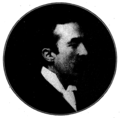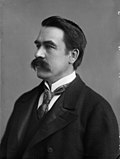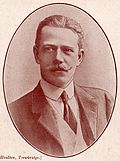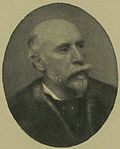History
Bath is an ancient constituency which has been constantly represented in Parliament since boroughs were first summoned to send members in the 13th century.
Bath was one of the cities summoned to send members in 1295 and represented ever since, [5] although Parliaments in early years were sporadic. Like almost all English constituencies before the Great Reform Act 1832, it originally returned two members to each Parliament. [6]
The precise way in which Bath's MPs were chosen in the Middle Ages is unknown. It is recorded that "election was by the Mayor and three citizens being sent from thence to the county court who in the name of the whole community, and by the assent of the community, returned their representatives"; but whether the "assent of the community" was real or what form it took is unrecorded, even assuming it was not a completely dead letter. By the 17th century, elections had become more competitive, as the means of election in Bath had become a franchise restricted to the Mayor, Aldermen, and members of the Common Council (the City Corporation), a total of thirty voters. [6] The freemen of the city challenged this state of affairs in 1661 and again in 1705, claiming the right to vote and petitioning against the election of the candidates chosen by the corporation, but on both occasions the House of Commons, which at the time was still the final arbiter of such disputes, decided against them. The Commons resolution of 27 January 1708, "That the right of election of citizens to serve in Parliament for this city is in the mayor, aldermen and common-council only", [7] settled the matter until 1832.
Bath was the most populous of the English boroughs where the right to vote was restricted to the corporation. [6] At the time of the 1801 census, it was one of the ten largest towns or cities in England by population, and was almost unique in that the voters generally exercised their powers independently. As was the case elsewhere, the Common Council was not popularly elected, all vacancies being filled by co-option by the existing members, so that once a united interest had gained majority control it was easy to retain it. Most corporation boroughs quickly became pocket boroughs in this way, the nomination of their members of parliament being entirely decided by a patron who may have given some large benefaction to the area or simply used bribery to ensure only his supporters or croneys became members of the corporation. But in Bath, the Common Council retained its independence in most periods and took pride in electing two suitable members of parliament who had either strong local connections or else a national reputation. Nor was there any suggestion of bribery or other corruption, prolific in other "independent" constituencies. Pitt the Elder wrote to the corporation in 1761, on the occasion of his re-election as one of Bath's members, to pay tribute to "a city ranked among the most ancient and most considerable in the kingdom, and justly famed for its integrity, independence, and zeal for the public good". [8]
But even in Bath the limited electorate who voted for its members of Parliament expected them to work to procure favours for their constituents and enterprises to a degree that would be considered corrupt today. By exercising efforts successfully in this direction, the representatives could in return expect a degree of influence over the voters that differed little from patronage in the pocket boroughs, except that its duration was limited. Thus the lawyer Robert Henley, a Bath MP from 1747 and also Recorder of Bath from 1751, seems to have been assumed to have control over both seats while he held one of them and immediately after; yet when he gained a peerage and thus a seat in the House of Lords, Pitt replaced him on the understanding of being independently chosen. Pitt himself then acquired similar influence: the council vetoed Viscount Ligonier's suggestion that he should be succeeded by his nephew when he was elevated the Lords in 1763, but instead allowed Pitt to nominate a candidate to be his new colleague, and voted overwhelmingly for him when he was opposed by a local man. But Pitt's influence also waned when he fell out with the council over the Treaty of Paris later in 1763. [9]
In the final years before the Reform Act 1832, however, local magnates exerted a more controlling influence in Bath. Oldfield, writing early in the 19th century, stated that at that time the Marquess of Bath nominated one member and John Palmer the other; both were former members of Parliament for the city (Lord Bath having sat as Viscount Weymouth, before his father's death took him to the Lords), but neither was then in the Commons – each had a relation sitting as one of the members for Bath. Palmer had succeeded Earl Camden [n 4] who held one of the two seats before 1802. At the time of the Reform Act 1832, Lord Bath was still being listed as influencing one of the seats, although the second was considered independent once more. [10]
The Reform Act 1832 opened up the franchise to all resident (male) householders whose houses had a value of at least £10 a year and imposed uniform voting provisions for all the boroughs. Bath was one of the boroughs which continued to elect two members. Given the city's medium size and its generally high property values, its electorate increased by a factor of almost 100 [n 5] , from 30 in 1831 to 2,853 in 1832, [11] and created a competitive and generally marginal constituency which swung between Whig and Tory (later Liberal and Conservative) control. The parliamentary borough's boundaries were also slightly extended, but only to take in those areas into which the built-up area of the city had expanded. Bath's most notable member during this period was probably the Conservative social reformer Lord Ashley, better remembered under his eventual title of 7th Earl of Shaftesbury, for the Factory Acts, the first of which came into effect while he was one of the MPs for Bath. [12]
The franchise was further reformed in 1867 and by the Redistribution of Seats Act 1885, with only minor boundary changes. Bath was lucky to retain its two-member representation in the 1885 reforms, as its electorate of under 7,000 was near the lower limit, and this situation lasted until the 1918 reforms. [13] The continued Liberal strength was unusual for a prosperous and predominantly middle-class town, and the seats could until 1918 not be considered safe for the Conservatives. [14]
Modern single-member constituency (since 1918)
Bath's representation was reduced to a single member in 1918. The Conservatives held the seat continuously until 1992, except in the 1923 Parliament, and until World War II generally won comfortably – the Liberals retained such strength that the non-Conservative vote was split, and Labour could not rise above third place until the landslide of 1945, when the Conservative James Pitman achieved a very marginal majority. From 1945 to 1970, Labour presented the main challenge, and came within 800 votes of taking the seat in 1966.
The Liberal revival in the 1970s saw the two more left-wing parties swap places, helped by the adoption of a nationally known candidate, Christopher Mayhew, who had defected from the Labour Party. [15] The formation of the SDP–Liberal Alliance made Bath a realistic target. The SDP came 1500 votes from winning in 1987 under Malcolm Dean. In 1992, Conservative Chris Patten was ousted by Liberal Democrat Don Foster in a narrow defeat widely blamed on Patten's strategising, campaign leading and communicating as Conservative Party chairman rather than canvassing his own constituents. [16] At each election from 1992 to 2015, a different Conservative candidate contested the constituency.
The boundary changes implemented in 1997 took Bathampton, Batheaston, Bathford, Charlcombe and Freshford from the Wansdyke district, containing about 7,000 voters; these were moved elsewhere in 2010. Nominally, these areas had a slightly higher tendency to prefer a Conservative candidate but, the national government suffering from sleaze, in 1997 Don Foster more than doubled his almost 4,000 vote majority to over 9,000 votes. After winning two intervening elections, in 2010 Foster achieved his highest majority of 11,883 votes. [17]
In the 2015 general election, following the national Liberal Democrat collapse and Foster standing down, the seat was regained by the Conservatives under Ben Howlett with a 3,833-vote majority. [18]
Bath is estimated to have voted to remain in the European Union by 68.3% in the 2016 referendum on the UK's membership of the EU. [19]
In the 2017 general election, the constituency was regained by the Liberal Democrats' Wera Hobhouse, with the second-highest Liberal Democrat vote share increase nationally (after Richmond Park). [20]
In the 2019 general election, the constituency was one of 60 seats included in an agreement between the Liberal Democrats, the Green Party and Plaid Cymru not to vie against one another in those seats (Unite to Remain). Accordingly, the Green Party did not stand and Hobhouse increased her majority to 23.6%.
In December 2023, the Labour Party included the seat in its published list of 211 non-battleground seats, suggesting they did not see it as winnable. [21]
In the 2024 general election, the Green Party stood again, achieving 12.4% of the vote, resulting in a similar drop in the Liberal Democrat vote. However, Hobhouse's majority was maintained as the Conservative vote collapsed and Labour achieved second place for the first time in the seat's history.















